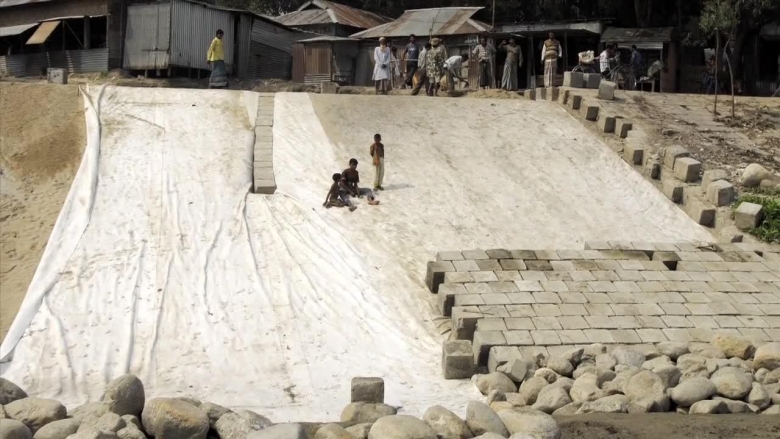The construction of polders along the entire coastal belt provided protection to the people and their agricultural land. Today 1.2 million hectares of land is utilized for agricultural purposes within the embankment system. This represents almost 15% of Bangladesh’s total arable land.
However, the vulnerability of the coastal population is on the rise due to climate change. Climate variability will accentuate the risks facing coastal Bangladesh.
The risks span:
-Cyclones and storm surges
-River bank erosion and vulnerability of islands and chars
-Sea level rise
-Saline intrusion, and coastal erosion.
Re-focusing the strategy
With these challenges in mind, Bangladesh’s Government is refocusing its strategy in coastal areas from one that only protects against high tides to one that provide protection against frequent storm surges. "The embankments are vital for the livelihood of the population living in the coastal areas. Over time, the embankments have been weakened and eroded; this project will upgrade them systemically," said Masood Ahmad, World Bank Lead Water Specialist.
Investing in adaptation measures today will provide huge savings in the future by minimizing the damages associated with extreme weather events.
Economic and Social Benefits
Improvement of polders will enhance the resilience of coastal areas to cyclones, tidal and flood inundations, and salinity intrusion. This in turn will enhance the people’s livelihoods through increased agricultural production during normal weather and reduced loss of life, assets, crops and livestock in the event of a disaster.
-The Project will help reduce poverty and stimulate economic development by facilitating the growth of farm and non-farm activities.
-The Project will provide direct protection to the 760,000 people living within the polder boundaries.
-The Project is expected to benefit 8.5 million people living in 6 coastal districts (Bagerhat, Khulna, Satkhira, Barguna, Patuakhali and Pirojpur) through agriculture development, employment and food security.
The project is expected to increase confidence among the coastal population by securing agriculture, fishery, forestry and local industries, while generating employment for the poor, disadvantaged women and other vulnerable groups.
"This project is an essential step forward in building the resilience of the coastal population of Bangladesh to climate change," said Maria Sarraf, World Bank's project leader.

